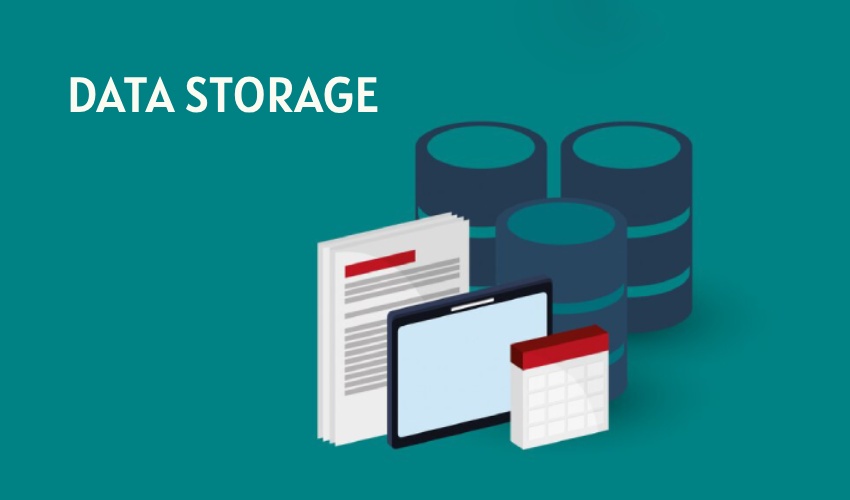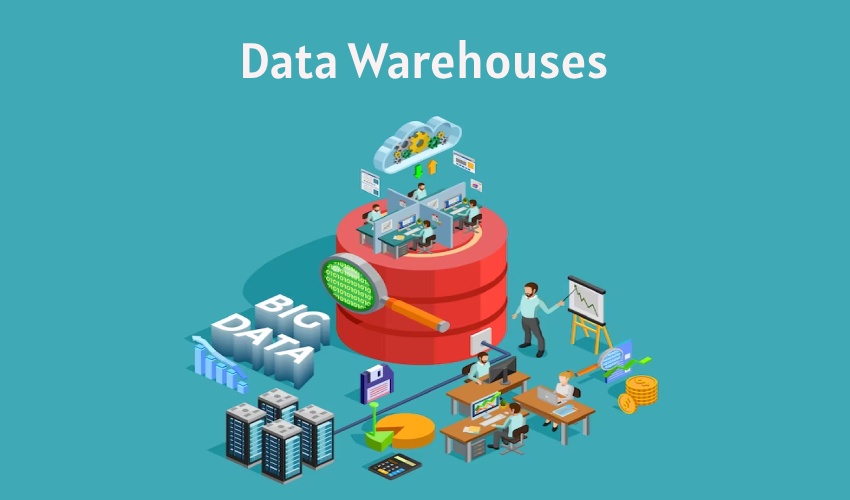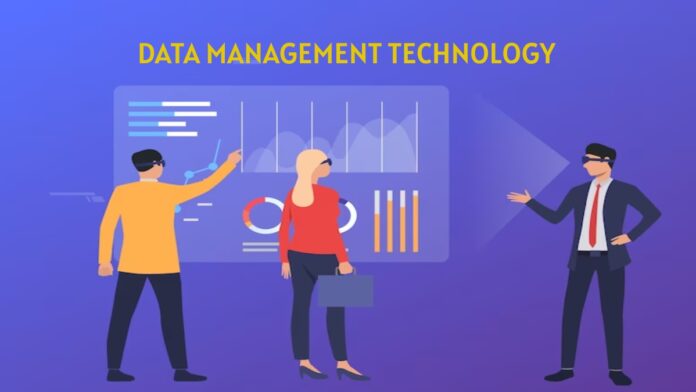Now, the creation of data by businesses and institutions is done in a very short period of time…⏱️ The importance of this Data Management technology for Business to secure an assist, improve the process of handling business 🏢 and get ahead of their competition. Still, the issue may be the proper management of all this data without the needed tools. This is where data management technology steps in… 🌟
Data management technology contains the various tools and methods that organizations use to collect, store, arrange, protect, and analyze the data📊. It plays a important role in many systems that include databases, data warehouses, big data platforms, cloud storage, backup☁️, recovery tools🔄, and software that helps with data integration and control. 🔧
The purpose of this blog is to discuss how data management technology help business and what are the key elements of data management for business with it’s best practices.
Keep Reading..📖
Key Elements of Data Management Technology for Business
Data management technology is a set of tools, processes, and systems that support the end-to-end lifecycle of the data. It deals with the different portion and assignments to secure that the data is available, correct, secure, and responsible. Here are the main elements of Data Management Technology for Business explained:
1. Data Storage
Such as the physical or virtual environments where data is kept, for example, databases, data warehouses, data lakes, and cloud storage systems. It is the process of selecting the most appropriate storage technology and design according to the particular data requirements.

2. Data Integration
Data integration means pulling data together from different sources and formats and making it into a single clear and consistent format. Techniques like extract, transform, load processes (ETL), data replication, data federation, and data virtualization are included to combine and arrange the data.
3. Data Governance
Data governance enforces rules, procedures, and controls to ensure that data is managed and used properly. It involves defining data ownership, data management, and access rights. Data governance also consists of data quality assurance, metadata management, data classification, and adherence to laws and regulations.
4. Data Modeling
Data modeling is the method of creating the structure of data and the connection of different data elements among each other. Thus, data becomes more manageable and easier to understand in a more effective way. It is a method through which different data models are constituted, e.g. conceptual, logical, and physical models, using diagrams or relational structures.
5. Data Analytics
The technology of data management for business is usually accompanied with services and means of data analysis to obtain knowledge. Different methods like data mining, statistical analysis, machine learning (ML), etc… are used for selection, business intelligence, and data-based strategy.
6. Data Lifecycle Management (DLM)
Data lifecycle management basically refers to the handling of the entire data from the time it is created and gathered to the different stages like storage, use, and archiving, as well as disposal. It’s control the data maintenance period, organizing, backup and recovering the right scrapping of the data that is the process.

7. Master Data Management (MDM)
Master Data Management (MDM) deals with not only customers but also products, and employees’ data which ensures their proper functioning and clearness across various systems and applications. The process of eliminating duplicates and inaccuracies of data starts with creating and maintaining one trustworthy master data source where all discrepancies are removed. To learn more, check out Informatica MDM Training!
8. Data Integration and Workflow
Data Management Technology for Business typically contains tools for the efficient management of data integration workflows, data pipelines, and data transformation processes. This bridges the gap and permits data movement and conversion between systems, applications, and processes.
9. Metadata Management
Metadata management unites the functions of absorbing, ordering, and dealing with metadata, which is data about the data. It has e.g. repositories of metadata, data dictionaries, and data catalogs that are used to effectively manage metadata, so it is easier to find and understand data.
These components cooperate with each other to form a full-fledged Data Management Technology for Business that gives the ability to manage their data assets and get value from them in an optimal way.
Also Read: Best Data Recovery Software
Overview of Data Storage and Retrieval Technologies
Data storage and retrieval technologies are primary technologies in data management systems that enable the data to be stored, organized, and accessed efficiently and reliably. Here are some common storage and retrieval technologies:
1. Relational Databases
MySQL, Oracle, and Microsoft SQL Server are relational databases that used to store structured data. These organize the data in table format which has predefined types to efficiently perform querying, indexing, and also make transactions management easier.
2. NoSQL Databases
NoSQL (Not Only SQL) types of databases like MongoDB, Cassandra, and Redis are designed for a large amount of unprocessed or semi-processed data. They allow adaptive data architecture, scalability, and superb function for specific assignments such as document storage, key-value storage, or graph databases.
3. Data Warehouses
Data warehouses are special types of databases that gather and keep structured data from diverse sources for analysis and reporting. They apply a schema-on-write method and usually use star or snowflake schemas which are optimized structures so that the complex queries and data analysis are made easier.

4. Data Lakes
Data lakes typically house vast amounts of raw, unprocessed data, holding both structured, semi-structured, and unstructured types of data in their natural form without any transformation. The data storage functionality they provide is centralized, allowing the examination, processing, and analysis of the data with various tools and frameworks without any limitations.
5. Cloud Storage
Storage of clouds is a service that gives you a place to keep your data like it is a physical digital site there.Amazon S3, Google Cloud Storage, and Microsoft Azure Blob Storage are know as cloud solutions which used to store data in the cloud. It’s Not only secure data, but they are also always providing access to it through APIs. They also have different storage options and speeds for data transferring.
These technologies serve different purposes and are selected based on factors like data volume, structure, performance requirements, and cost considerations.
Also Read: Best Data Transfer App for Android
Data Management Integration Approaches and Technologies
Being integrated with other technologies is the prerequisite to the data management systems for the communication of the data, data sharing, and successful collaboration with different systems and applications in the technology environment of an organization. Data management integration approaches and technologies are some of the common ones that you can read below:
1. Application Programming Interfaces
APIs (Application Programming Interfaces) define a common framework and instructions for establishing the connection among various software applications. Data management systems frequently provide APIs that allow other systems to interact and exchange data. APIs allow Data integration, data synchronization, and consistent of multiple applications.
2. Extract, Transform, Load (ETL) Tools
ETL tools are the ones that make data integration possible by taking data from different locations, converting it to a uniform standard, and putting it into the desired system. On the other hand, these tools are also useful in the transportation of data between diverse systems, databases, and data warehouses.
3. Messaging Systems
Messaging systems, which utilize enterprise service buses (ESBs) or message queues, aid asynchronous communication and data exchange between numerous applications. In this way, they facilitate decoupling and integration by means of systems sending and receiving messages containing data or commands.
4. Data Integration Platforms
Data Integration Platforms are multifunctional tools specialized for the integration of data in various ways such as data transformation, mapping, workflow orchestration, and scheduling. They provide visual interfaces and tools that make it easier to integrate different data sources and systems.
Also Read: Discord Account Recovery
Conclusion
Effective Data Management Technology for Business is basic for organizations in current digital world. The prioritization of data storage📦, integration🔗, governance🔒 as well as analytics by businesses can enhance their data management, the quality of decision-making🧠, and ensure the protection of data assets. ..📊
Implementing the best practices in these areas produces operational efficiency and credits data-driven decision-making. When data is much bigger investing in good data management technologies makes organizations win portable benefits📈, get compliance, and differentiate from competition🏆. Data management is a process that let company to collect, store, and use data to grow their businesses…💭
Thanks for Reading 🏢
Discover Useful Free Tools Relevant to This Article
Below are some helpful, free web tools that can support your projects and tasks relevant to the ideas and tips shared in this article. These tools are designed to make your work easier and more efficient for free:
4. World Clock


